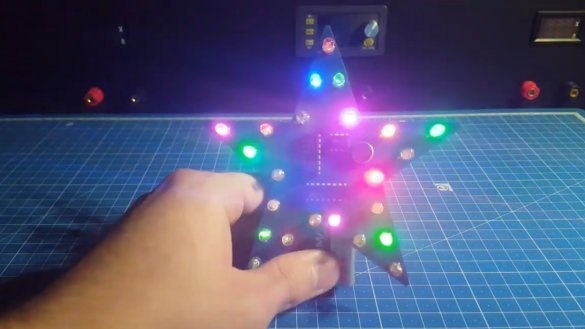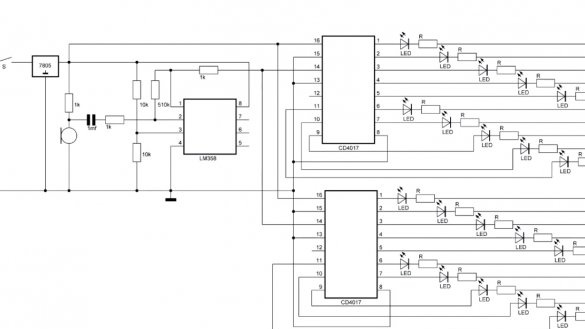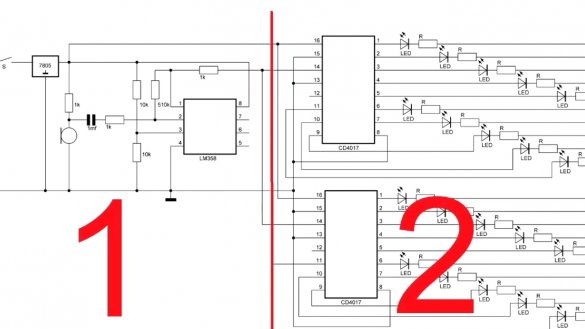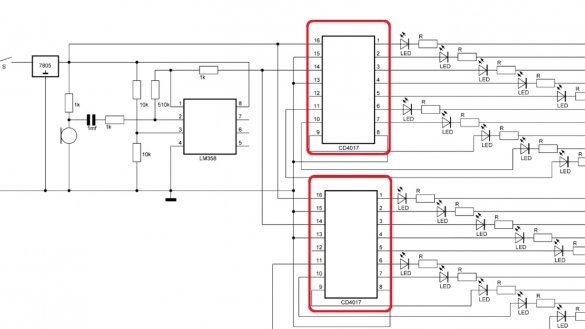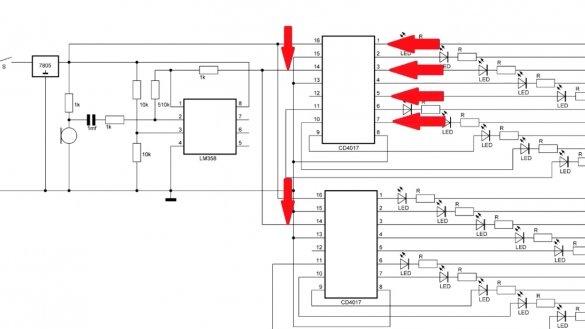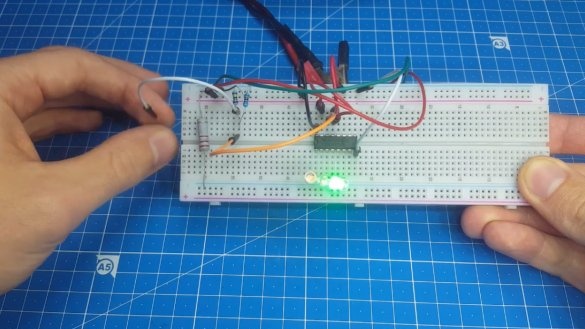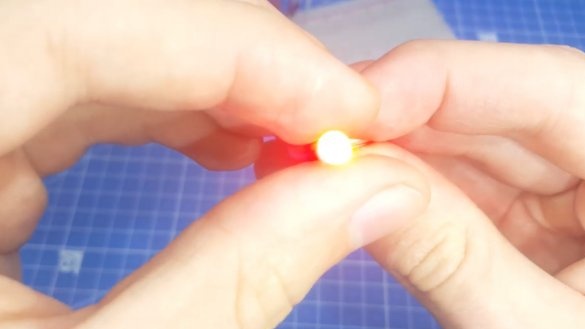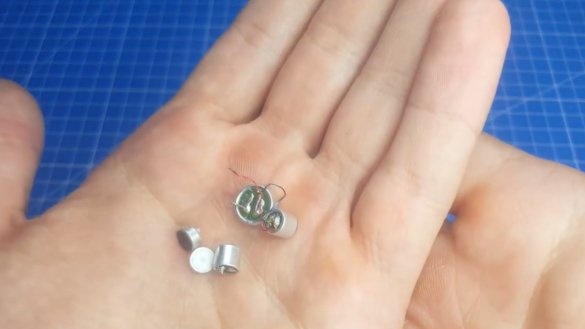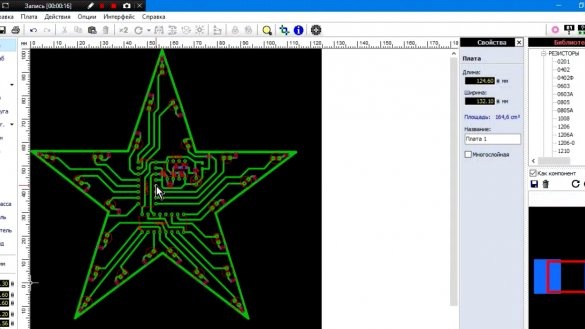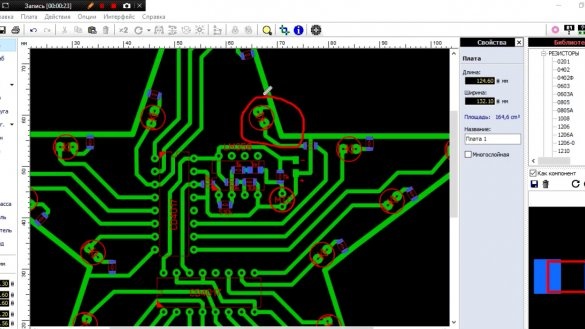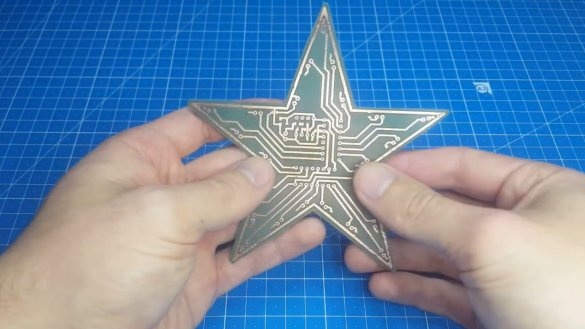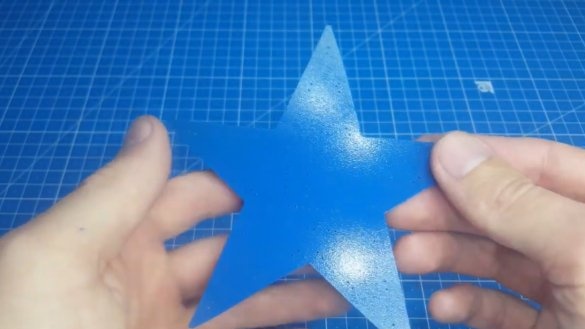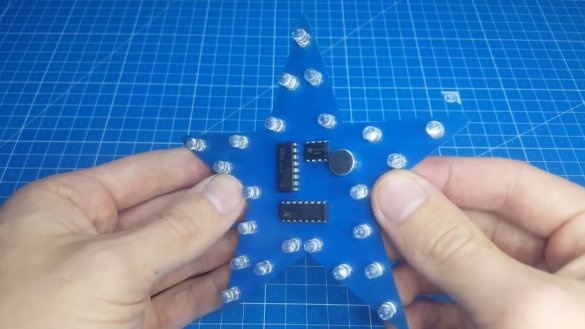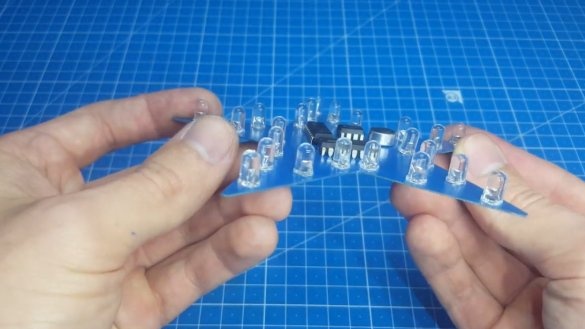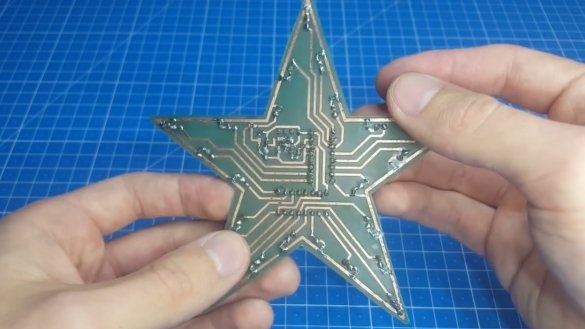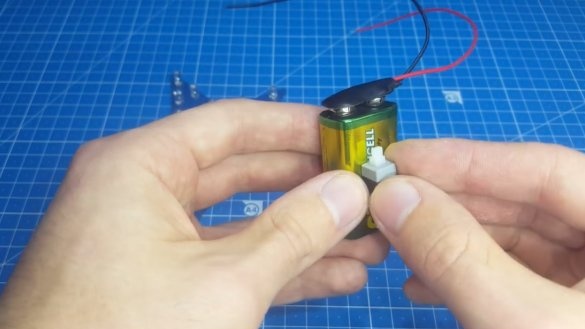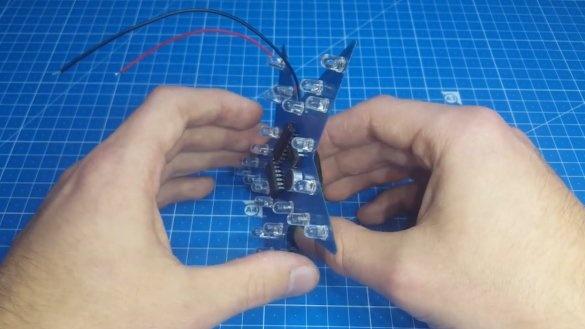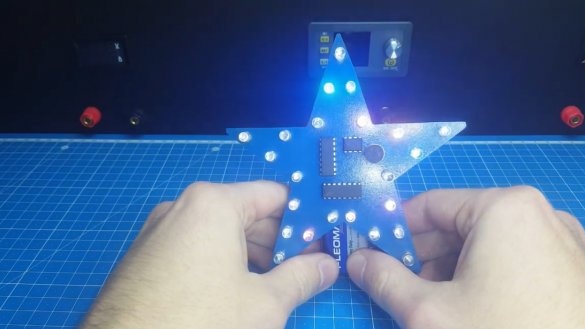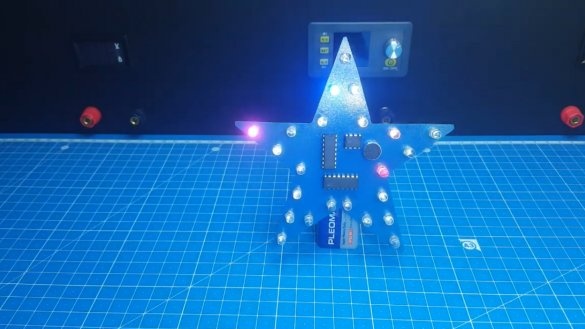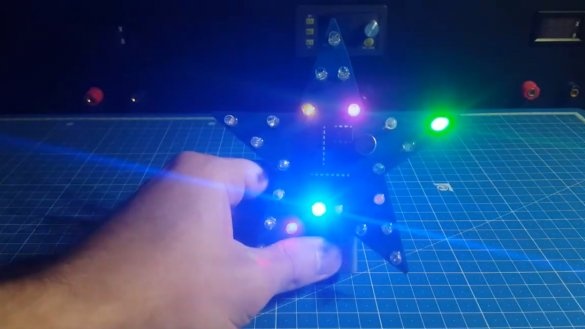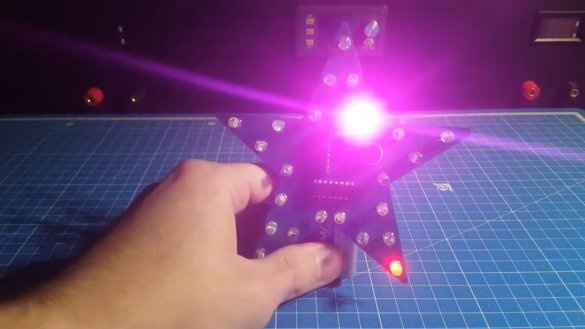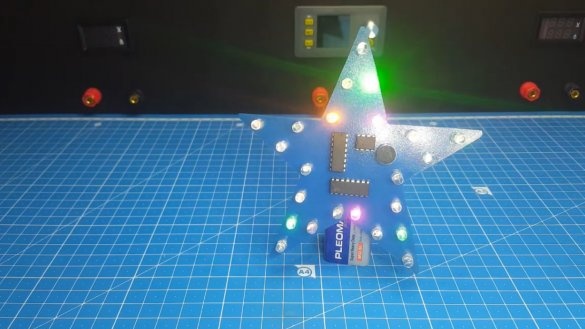On the eve of the upcoming New Year, we, together with Roman, the author of YouTube channel "OpenFrimeTV", do it yourself we will make an original decoration for this wonderful winter for everyone's favorite holiday.
This asterisk reacts to the voice and, depending on this, blinks LEDs of various colors. It looks very beautiful in the dark.
Such a star can be hung on a Christmas tree and enjoy a spectacular bright spectacle. The microphone response distance is about one and a half meters.
Now move on to device diagram:
Here everything was done without microcontrollers, everything is as simple as possible. The circuit can be divided into 2 parts: the first is a microphone amplifier, and the second is a blinker itself.
The flasher is assembled on a CD4017 chip, this is a counter decoder.
It works this way: when a pulse is applied to the microcircuit, voltage appears at its outputs in turn.
LEDs are connected to the outputs and they naturally light up from a pulse.
The author did not indicate the resistor values for the LEDs, as they are individual. For example, the red LED turned out to be too bright, and the author put a 47 kOhm resistor on it, but the blue one, on the contrary, dimmed, so the author put a 330 Ohm resistor in front of it.
It is also necessary to say about the microphone.
This is an ordinary electret microphone, such can be obtained from old headphones. When connecting, you need to determine where the minus (-) is, it is usually connected with such cores to the case:
Now you can go directly to the printed circuit board itself.
Everything is simple here, the values are signed, the LEDs need 5 mm. If you want to use other LEDs, you will have to redo the circuit board.
Next, we proceed to the manufacture of the board. Everything is standard here, except that the author decided to paint it, he chose blue. Well, the brown board does not look beautiful.
When sealing the board, be sure that smd elements do not shorten onto the track that is under them.
Well, that’s all, it remains only to supply food. To do this, we will use a battery of the "Krona" type.We also place the power button and the 7805 chip on it.
We attach the “crown” on hot melt to our New Year’s star and can be turned on.
To demonstrate the flashing effects, the author turned on background music, it is recommended to look original video:
Well, it turned out simple and cool, I hope you enjoy it. Thank you for attention. Happy New Year to all and see you soon!

